WALL
Cam Christiansen
2017
| 82 min 31 s
Selections and Awards
Official SelectionCalgary International Film Festival 2017
Official SelectionSommets du cinéma d’animation- Montréal 2017
Official SelectionSanta Barbara International Film Festival - 2018
Official Selection - Feature Film Annecy 2018
Official SelectionCPH:DOX (Copenhagen International Documentary Film Festival 2018)
Competition - Feature FilmsAnima Mundi International Animation Festival Brazil 2018
Official SelectionEdinburgh International Film Festival 2018
Official SelectionAnimix Festival Tel Aviv 2018
Official SelectionCinanima International Festival Portugal 2018
Official SelectionDoclands San Francisco USA 2018
WALL is a feature-length animated film written by and starring playwright and two-time Academy Award® nominee for screenwriting (The Hours, The Reader) David Hare, whom The Washington Post referred to as “the premiere political dramatist writing in English.” Hare’s body of work spans 35 years and deftly explores socio-political issues at home and abroad. The 80-minute film follows Hare on a trip to the Middle East to examine the impact the wall separating Israel and Palestine has had on the people of the region.
Using advanced animation tools and 3D motion-capture footage, filmmaker Cam Christiansen employs a distinctive handcrafted approach that conveys the reality of the 708-kilometre barrier as no film has before. Rich with rhythmic, raw imagery, WALL explores the “fence” that has forever united, divided and changed communities, while brilliantly capturing the emotions surrounding this massive reminder of unrest.
Revealing and passionate insights from renowned Israeli novelist David Grossman, Professor Neill Lochery of London University, Professor Sari Nusseibeh of Al-Quds University, and Ramallah-based attorney Raja Shehadeh are all framed by Hare’s journey, as both his heart and mind are shaken by the incongruities and contradictions of life in the shadow of the wall.
WALL is a National Film Board of Canada production, produced by David Christensen and Bonnie Thompson.
See the Film
WALL is a feature-length animated film written by and starring preeminent British playwright and two-time Academy Award® nominee (The Hours, The Reader) David Hare, whom The Washington Post referred to as “the premiere political dramatist writing in English.” The film follows the writer on a trip to the Middle East to explore the impact the wall separating Israel and Palestine has had on the people of the region. Using advanced animation tools and 3D motion-capture footage, filmmaker Cam Christiansen employs a distinctive handcrafted approach that conveys the reality of the 708-kilometre barrier as no film has before. Rich with rhythmic, raw imagery, the film is framed by Hare’s journey, as both his heart and mind are shaken by the incongruities and contradictions of life in the shadow of the wall.
Short Synopsis
Preeminent UK playwright and screenwriter David Hare—whom The Washington Post referred to as “the premiere political dramatist writing in English”—writes and stars in this innovative animated feature that explores the reality of the wall separating Israel and Palestine as no film has before. Rich with rhythmic, raw imagery, the film is framed by Hare’s journey, as both his heart and mind are shaken by the incongruities and contradictions of life in the shadow of the wall.
Building a WALL
Moments and milestones in an epic animated essay
It’s a good thing that David Christensen does a lot of commuting—otherwise WALL, the new National Film Board of Canada animated feature film, might never have been made.
Back in 2010, the NFB Executive Producer and Producer had a three-hour drive ahead of him when he chanced upon a podcast of WALL, a monologue by acclaimed British playwright David Hare about the security partition built along the West Bank.
“Listening to David Hare’s take on this wall Israel had put up gripped me visually,” recalls Christensen.
Riveted by Hare’s reframing of the issue and struck by how he could visualize the piece as an animated film, Christensen immediately called his producing partner Bonnie Thompson, who had the same reaction he did upon listening to Hare’s piece.
“For many of us, the issues around the Middle East, Israel and Palestine are complex and polarizing,” says Thompson. “We thought making an animated film was a way to better understand this wall.”
“There’s a strong history of Canadian directors looking at stories outside our borders that directly impact us in Canada,” notes Christensen. “And here at the NFB that is particularly true. The NFB won its first Oscar for Churchill’s Island in 1942; we’re known for doing projects from an outsider’s perspective,” he says.
Having recently worked with Calgary animator Cam Christiansen on the celebrated short film The Real Place, Christensen and Thompson felt he was the ideal creative spark for the project.
“Cam had taken a subject about playwright John Murrell and made it very accessible and beautiful,” recalls Thompson. “Cam’s very conceptual and metaphorical in the way he animates, and David and I felt the ideas in WALL could be rendered in animation to help us see things in new ways. Documentaries often make you feel like you’re going to learn something, but animation is a little bit seductive: you’re pulled into a story.”
When the producers approached Hare about bringing his monologue to the big screen, the Englishman’s interest was piqued.
“I knew that Canada has this incredibly strong tradition of animation, and meeting Cam and seeing his films, I knew I was with the right people,” says Hare.
“The chance to work with them was very exciting for me because I’ve spent my life experimenting, and trying to learn new things. I’ve written different kinds of epic theatre, movies, television, and a memoir, so to go into my 60s trying to understand how the process of animation and motion capture worked was absolutely fascinating.”
“Finding out what worked and what didn’t was extremely arduous. With animation, it’s really difficult to get the connection between the rhythm of the words and the rhythm of the images,” says Hare. “It’s been a process of a refinement. The project was so insanely ambitious because this is an experimental form. We had to discover the rules as we went along by trial and error.”
Working as a team to develop Hare’s story and the technology to carry it out was a welcome challenge, notes Christensen, one that married risk taking and exploration.
“The NFB has a proud and storied history of animation taking significant amounts of time, and when we started WALL, we had huge ambitions for it: we wanted to integrate motion capture with other technology at our disposal, none of which had ever been done,” he says.
“That’s what makes the NFB distinct: we take the time to put together something that could not be done anywhere else.”
Using cutting-edge animation tools with a unique handcrafted aesthetic, Christiansen incorporated material shot on location in the Middle East with 3D motion-capture footage filmed at London’s Pinewood Studios. Working with other performers for that shoot represented a new experience for Hare, who donned a Lycra suit and tracking mechanisms for the occasion.
“I was the only non-professional actor, and Lycra is an extremely unfriendly and exposing kind of material to be wearing,” he explains. “Film actors are used to the idea of fighting the giant when there’s no giant there. But if, like me, you don’t act for a living, it’s extremely peculiar to walk around an empty studio pretending all the time, so I was incredibly happy to be guided through by my fellow actors.”
For the animator and the producers, authenticity was paramount. Visiting all the spots Hare had travelled to and meeting the people he had talked to on his journey allowed the team to understand their perspective more deeply.
“Even though this film is animated, I wanted everything to be from the actual place itself as much as possible,” says Christiansen, who shot reference photos of every location and footage of every onscreen character.
“Cam has provided images way, way above anything that I dreamt of,” says Hare.
Ironically, a film that took years to make is more relevant in today’s political climate than when its creators conceived it, notes Christensen.
“The film would fail for me if it didn’t spark reaction and opinions. Nobody will see quite the same thing; that’s the testament to the nuance of what WALL has captured. It’s not coming down, and there’s no one right way to address the situation,” he says.
“Once WALL became a film, it was no longer a monologue or a play,” adds Bonnie. “It created an opportunity for a beautiful visual exploration. There are places, like the Jerusalem sequence, where Cam has created a sense of that place from three different religious viewpoints. At the end of the film, we see the graffiti on the wall; this is where animation sings and becomes poetry. This is the delight. This is why we did this.”
An unlikely creative journey
The “musical partnership” between words and animated images produces an innovative art form
Calgary animator Cam Christiansen won’t soon forget September 24, 2010, the official start of his most satisfying creative collaboration. That day, the renowned British author, playwright and director Sir David Hare wrote a message in Christiansen’s notebook: “Today, we start on our grand adventure.”
Making WALL—a National Film Board animated feature documentary about the separation barrier between Israel and Palestine—has indeed been a voyage of discovery for both artists.
“The moment I learned David was onboard, I was excited to work with him; he’s a very influential and well-respected voice,” says Christiansen, himself a rising star in animation circles for his acclaimed NFB short film The Real Place, an evocative tribute to playwright John Murrell, and for the Canada’s Top Ten pick I Have Seen the Future.
“When I saw Cam’s short films, it was abundantly clear he’s a brilliant animator, someone who would see a project through and make it work,” recalls Hare.
When producers Bonnie Thompson and David Christensen approached him about transforming Hare’s provocative monologue into an animated film, Christiansen was excited, but also a bit wary.
“I basically knew what the average North American knew about Middle East politics. This wall is very contentious, because one side sees it as an essential and effective security device, while the other views it as an intrusion of their sovereignty and a land-grab. It’s a super-complex topic,” says Christiansen. “But I saw this as a really exciting opportunity and I ended up being in the right place at the right time.”
That September day in 2010, Hare and Christiansen discussed adapting the monologue in Hare’s studio. From Hare’s script, Christiansen began making digital sketches and storyboards, a process Hare found fascinating.
“The first exciting moment for me was when Cam created a mood reel, because he was attempting something totally original and for which there is no template or model,” says Hare.
“You can’t actually describe what this film is like because it isn’t like any other film, and that’s what’s completely wonderful about it. So Cam’s mood reel was both about the method that he was going to use and the imagery that was in his head.”
Since Christiansen wanted to merge 2D animation into the 3D world of motion-capture and live-action, using Hare as the main character in the film, the crew set up shop at London’s renowned Pinewood Studios and also travelled to the Middle East to shoot reference footage to be integrated into the animation. The long process to complete the film left Hare impressed with Christiansen’s dedication. Noting that he and Christiansen had about 10 sessions together over seven years to discuss and look at the project as it evolved, Hare marvels at how well the creative process manifested itself.
“Learning the rules of rapport between animator and essayist took forever, and I think Cam learnt a quite extraordinary sensitivity to my language,” notes Hare. “When I’ve seen completed sequences, which I have had no hand in at all, I’ve been stunned, apart from the beauty of the imagery, at the sense of rhythm he has. Cam knows exactly how long to hold a shot in order that the thought that I have put in the audiences’ mind with words be fulfilled. It’s been like a musical partnership, but conducted at an 8,000-kilometre distance. Cam has had to do it all by sensation, really, and it’s an incredible tribute to him.”
Christiansen, in turn, admires Hare’s readiness to accompany him on a unique creative journey, no matter where it led.
“In retrospect, I think it was incredibly brave of David, because in some ways, I was a complete unknown entity to him. Plus, I am representing him as a character in the film. He had a lot of trust in me, which was quite amazing. A lot of the animation techniques I was visualizing were pretty untested and very new. He was just so gung-ho about it all, and this whole experience has been absolutely incredible, totally unbelievable.”
Hare recalls that when Cam returned from shooting in Israel and Palestine, he was inspired by the haunting images he had seen, and eager to render them into the film.
“I think the movie is absolutely magnificent—a great work of art. I’m well aware that commercially, there is a very limited number of cinemas likely to be interested in showing something as groundbreaking and completely new as this, but I’ve never worked on a film that I was surer will last forever. I think people will always look at this film, because of the extraordinary originality of the imagery.”
Up against the WALL
When existing technology wouldn’t cut it, Calgary animator found the solution halfway around the world.
Cam Christiansen loves tinkering with new technology. Over the 15 years spent building a successful commercial career in Calgary, Alberta, Christiansen experimented with interactive projects, motion-design work and video editing, always looking for better, faster, cooler ways to tell his stories, such as the stylized use of video combined with computer models.
“I really like the visual medium and exploring new territory,” says Christiansen. “You can create different worlds where the only limit is your imagination.”
Since completing The Real Place, his first short film for the National Film Board, Christiansen’s innovative digital work has evolved to award-winning levels. His latest project, WALL, a feature-length animated documentary about the separation barrier between Israel and Palestine, inspired him to develop advanced animation techniques to depict the Middle East through a unique lens.
For this project, authenticity was key. During trips to the Middle East, Christiansen shot references for every character in the film, along with photos of the locations, before building computer models of everything. Christiansen envisioned delivering a distinctive, handcrafted texture that married that reference material with 3D motion-capture footage shot at London’s famed Pinewood Studios.
“My idea for WALL was to merge 2D animation into a 3D world of motion-capture and live-action, and I was excited about how it expanded possibilities,” explains Christiansen.
“A lot of animated films are shot in pieces—someone talking, someone moving—and then assembled. My thinking was to have all our actors in the same space, and shoot everything in real time; performances are much more natural when characters are reacting to each other, rather than to an empty green space,” he explains. “We recorded the motion of the bodies and the performances using a head camera so I could incorporate that footage of the face into the animation itself.”
Christiansen’s ideas, however, ultimately exceeded the existing animation tools at his disposal at the time.
“Rendering times were killing us, because I was going back and forth between three different applications. One pass of 5,000 frames would take me 12 hours to render and composite. If you make a mistake, there went another 12 hours. But I needed to make this work; it was in a real struggle against time, actually,” he recalls.
Realizing that he needed to create a new language that improved upon current animation tools, Christiansen scoured the Internet. He discovered a Russian website and watched YouTube videos made by animation software programmer Sergey Solohin, who lives in Crimea, Ukraine.
“Sergey seemed to be into similar stuff as me, so I did a Google translate from Russian to English and it was a euphoric moment: this guy could totally help me! Once Sergey and I started working together, he completely transformed my whole workflow.”
Using Autodesk MotionBuilder 3D character animation software which Sergey adapted through a series of plug-ins, the duo developed innovative digital tools to improve productivity and refine facial animation and motion-capture rendering techniques. This proprietary software introduced pioneering masking, sculpting and compositing elements for 3D application.
“Something that took me 12 hours would now take me 20 minutes, which made a huge difference,” says Christiansen. “We created several innovations around Mo-Plugs which I’m really proud of.”
Adding compositing tools to the 3D applications allowed Christiansen’s team to do colour correcting, depth of field, and other effects, all while reducing the number of passes required to render a scene. A new Facial Animation workflow helped Christiansen overcome traditional challenges.
“In a lot of 3D films, people blame motion capture for characters looking lifeless or creepy. The way a lot of computer models are animated, characters become like puppets in a way, and you lose the humanity,” he explains.
Christiansen wanted to track and transfer footage of characters’ faces into the animation, but in less time but with better results.
“We developed our own facial rig, which allows us to swap data from optical markers using our script, and we added Sculpting Tools directly into MotionBuilder that are designed to correct character flaws with blend shapes without having to take the character back to the original package such as Maya.”
They also rebuilt the render engine in MotionBuilder, which dramatically improved performance, conforming and optimizing Christiansen’s 3D files in order to create very large, complex, quick-rendering scenes. Other plug-ins such as 3D Matte Painting shaders enabled Christiansen to adjust contrast and hue saturation, and custom-build effects such as smoke, crowds or multi-layered scenes. Conceived as a video projector, the tool allowed Christiansen to apply a sequence of flying birds into the projection matting, creating many dynamic elements in 3D to bring the scene to life.
“Without Sergey, this film would not be what it is. He really enabled me to achieve what I wanted to achieve,” says Christiansen. “We’re super-proud of what we’ve done.”
As a footnote to this fortuitous partnership: it was while Cam and Sergey were working together on WALL that Russia annexed Crimea. This was a scary time for Crimeans, and the irony of working on WALL was not lost on Sergey. The parallels hit close to home. Working on the film became all the more important to him.
Promotional Materials
Trailer
Teaser
Clip #1A
Clip #1B
Clip #2
Clip #3
Clip #4
Clip #5
Clip #6
Clip #7
Images
Loading...

Download
Loading...
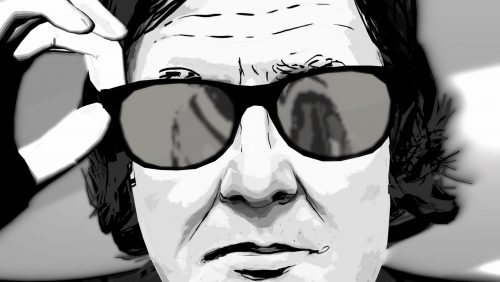
Download
Loading...
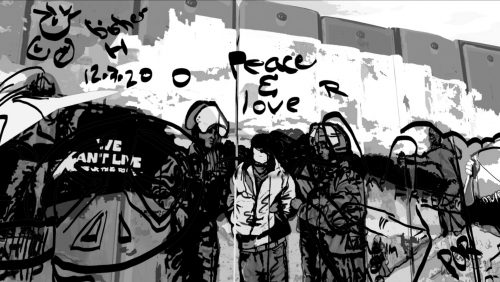
Download
Loading...
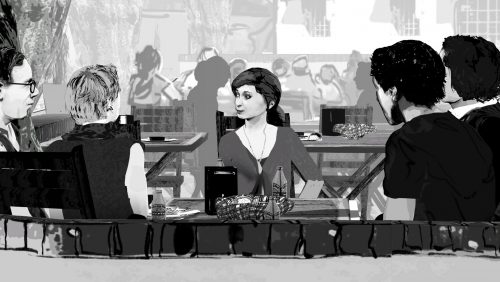
Download
Loading...
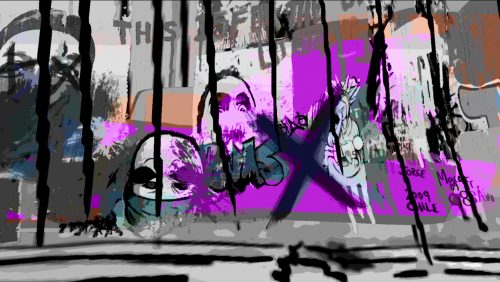
Download
Loading...
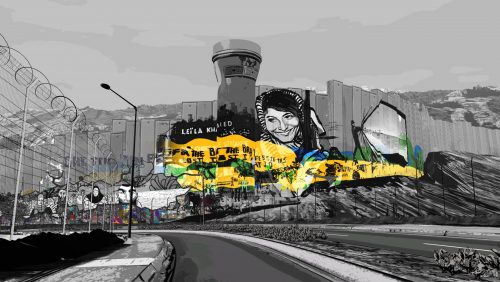
Download
Loading...

Download
Loading...
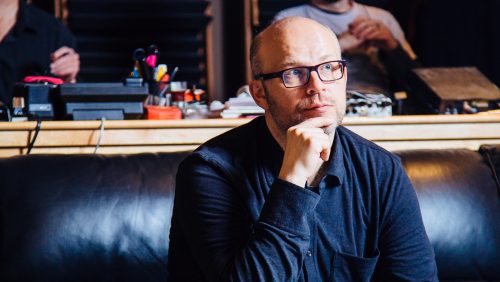
Download
Loading...
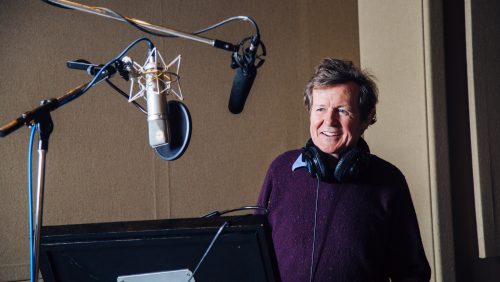
Download
Loading...
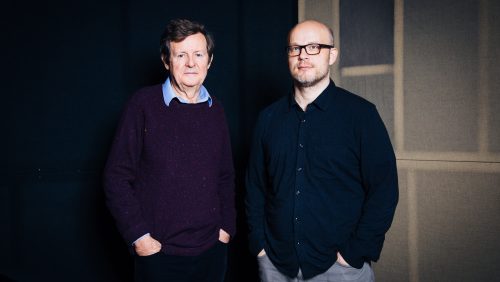
Download
Loading...

Download
Loading...
 Photo: Mark Power
Photo: Mark Power
Download
Team
Cam Christiansen
Director
Photo
Photo : Jennifer Rowsom
David Hare
Writer/Featured Subject
Photo
Photo : Walter Van Dyk
Bonnie Thompson
Producer (NFB)
Photo
Photo : Debbie Boccabella
David Christensen
Producer & Executive Producer
Photo
Credits
Written by
David Hare
Directed and Animated by
Cam Christiansen
Producers
David Christensen
Bonnie Thompson
Executive Producer
David Christensen
Based on the play
WALL
by David Hare
first produced on stage
at the Royal Court Theatre, London
and at the Public Theatre, New York,
directed by Stephen Daldry,
published by Faber and Faber.
In association with Anlanda Films
Producer for Anlanda Films
Cam Christiansen
Art Direction/Concept Artist
Cam Christiansen
Editor
Cam Christiansen
Programmer/Animator
Sergey Solokhin
Lead Animator/Production Manager
Mitch Barany
Lead Animator
Price Morgan
Animators
Niranjan Kailainathan
Deepak Kumar
Tyler Lemermeyer
Gregory Marshall
Joe Sie
William Dyer
2D Classical animation
Eleanor Goldberg
Banff Centre Work Student Animators
Court Brinsmead
Devan Burton
With the support of the
The Banff Centre
Kerry Stauffer, Executive Director
Jean Macpherson, Manager of Programs and Production
Cast:
David Hare as David Hare
Elliot Levey as Steven
Nayef Rashed as Afif
Ammar Haj Ahmad as Salman Tamar
Atta Alzweidi as Prisoner/various
Phillip Arditi as Raja Shehadeh
Amir Boutros as Palestinian torturer/various
Sam Cox as Neill Ochery
Paul Jesson as David Grossman
Sara Kestelman as Tel Aviv Friend
Nicholas le Prevost as Sari Nusseibeh
Imran Mraish as Ramallah Storyteller
Tracy Ann Oberman as Tel Aviv Friend
Raad Rawi as George Ibrahim
David Schneider as Tel Aviv Friend
Karzan Sherabayani as Adly Daish
Lauren Silver as Israeli Soldier
Aviv Teller as Israeli Soldier
Voice Actors:
John Watson as Tamar Salman/various
Michael Haddad as Raja Shehadeh/various
Participants (Banff shoot)
Roman Golad
Samir Bouzourene
Naor Cohen
Caitlin Leonard
Dexter Bateman
Morgan Bateman
Martin Finnerty
Dominic Girard
Sarah Hawcroft
Morna Stephensson
Sam Wald
Production services Israel and Palestine:
Noam Shalev – Highlight Films
Sound Recordists Israel: Amir Shmueli and Elad Goldi
Sound recordist Palestine: Shiraz Rishmawi
Production coordination Israel: Karin Neumann and Daniel Raz
Production coordination Palestine: Raghad Mukarkar and Hanna Abu Saada
Technical supervisor Israel: Itay Mintz
UK Casting Directors
Alastair Coomer
Juliet Horsley
UK Legal Services
Goslings (UK) LLP
Centroid Motion Capture, Pinewood
Phil Stilgoe: Performance Capture Producer
Stoo Haskayne: Perfromance Capture Supervisor
Mike Hedges: Facial Capture Technician
Iain Silvester: Motion Capture Coordinator
Kadel Barton: Senior Motion Capture Technician
Matt Parker: Motion Capture Technician
Jaleesa Tonge: Motion Capture Assistant
Eddie Ellis: Motion Capture Post Production Manager
Gary Hewson: Post Production Assistant
Goran Kimitrijevic: Motion Capture Tracking Manager
Igor Kovacevic: God of Tracking
Milos Knezevic: Tracker
Jelena Mitrovic: Tracker
Zoran Muncan: Tracker
Nenad Milosavljevic: Tracker
Nenad Milosavljevic: Tracker
Jugoslav Stojanov: Programmer
Sound Designer
Daniel Pellerin DSP
Composer
James Mark Stewart
End credits song
“ECHECS”
Written by
Hoda
with music by Tyler and Greg
Re-recording Mixer
Serge Boivin
Online Editor
Serge Verreault
Researchers
Elizabeth Klinck / E. Klinck Research
Scot Morison
Archival Audio
Rabin speech
Highlight Films, Israel
Arafat speech
Rick Ray/Shutterstock.com
Audio used under license from Shutterstock.com
Photographer
Michal Lavi
Technical Support
Mohammed El-Haji
Credits
Jacques Bertrand Simard
Translators
Hebrew – Larissa German
Arabic- Nora Dessouki
Legal
Christian Pitchen
The director dedicates this to
Marie Christiansen
The director thanks
Maureen Hodgan
Wendy Millward
Stephen Paget
Peter Williams
Gunner Christiansen
Mim
Bill Hodgan
Barry Hodgan
Trent Victor
Gunilla Victor
Ossian Victor
Rasmus Victor
Stella Victor
Michal Lavi
Aviv Fried
Wendy Tilby
Amanda Forbis
Toti Gestland
Cole Binder
Thanks to
Jenne Cassarotto and Nicholas Horne
Stephen Daldry
Oskar Eustis
Nicholas Hytner
Elyse Dogdson
George Ibrahim and staff at the Al Kasaba Cinema, Ramallah
David Grossman
Raja Shehadeh
Colin Curwen, New Machine Studios, Calgary
Tom Perlmutter
Cindy Witten
Lorne Price
Llewellyn Browne
Production Coordinators
Ginette D‘Silva
Jasmine Pullukatt
Faye Yoneda
Production Supervisors
Mark Power
Esther Viragh
Program Administrators
Bree Beach
Ginette D’Silva
Marketing Manager
Leslie Stafford
Centre Operations Manager
Darin Clausen
Executive Director of English Programming
Michelle Van Beusekom

Media Relations
-
About the NFB
The National Film Board of Canada (NFB) is a leader in exploring animation as an artform, a storytelling medium and innovative content for emerging platforms. It produces trailblazing animated works both in its Montreal studios and across the country, and it works with many of the world’s leading creators on international co-productions. NFB productions have won more than 7,000 awards, including seven Oscars for NFB animation and seven grand prizes at the Annecy festival. To access this unique content, visit NFB.ca.